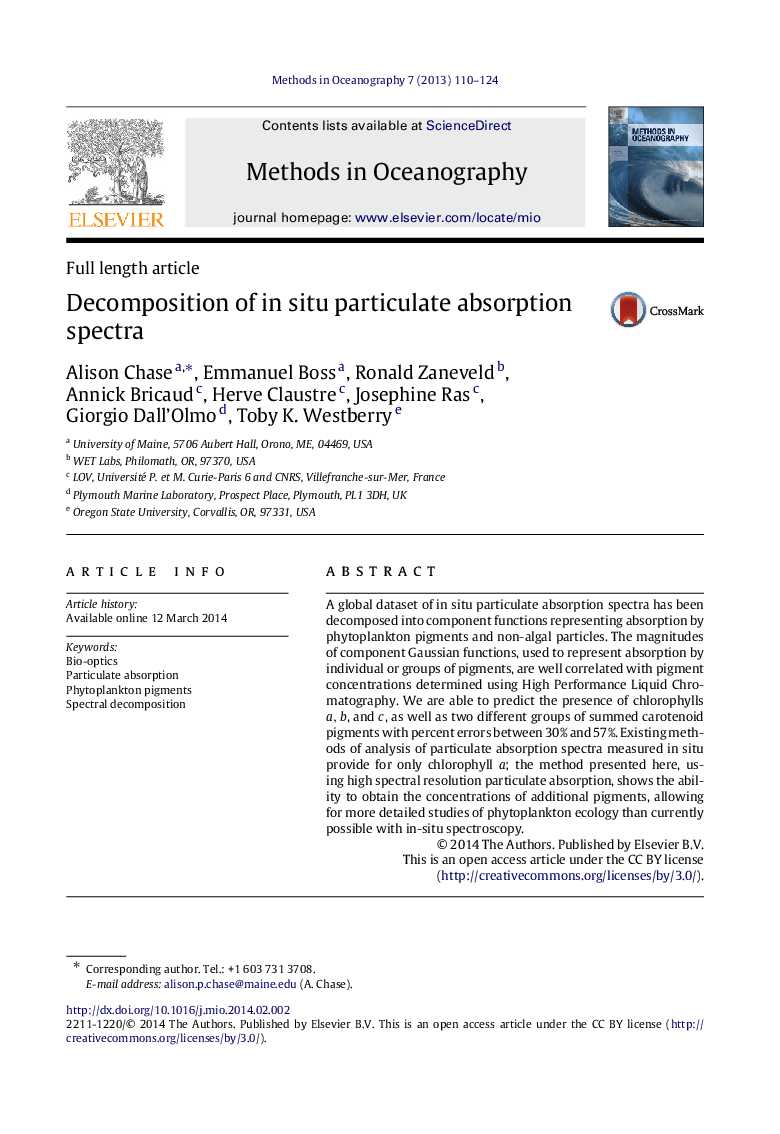| Article ID | Journal | Published Year | Pages | File Type |
|---|---|---|---|---|
| 8060486 | Methods in Oceanography | 2013 | 15 Pages |
Abstract
A global dataset of in situ particulate absorption spectra has been decomposed into component functions representing absorption by phytoplankton pigments and non-algal particles. The magnitudes of component Gaussian functions, used to represent absorption by individual or groups of pigments, are well correlated with pigment concentrations determined using High Performance Liquid Chromatography. We are able to predict the presence of chlorophylls a,b, and c, as well as two different groups of summed carotenoid pigments with percent errors between 30% and 57%. Existing methods of analysis of particulate absorption spectra measured in situ provide for only chlorophyll a; the method presented here, using high spectral resolution particulate absorption, shows the ability to obtain the concentrations of additional pigments, allowing for more detailed studies of phytoplankton ecology than currently possible with in-situ spectroscopy.
Related Topics
Physical Sciences and Engineering
Earth and Planetary Sciences
Oceanography
Authors
Alison Chase, Emmanuel Boss, Ronald Zaneveld, Annick Bricaud, Herve Claustre, Josephine Ras, Giorgio Dall'Olmo, Toby K. Westberry,
